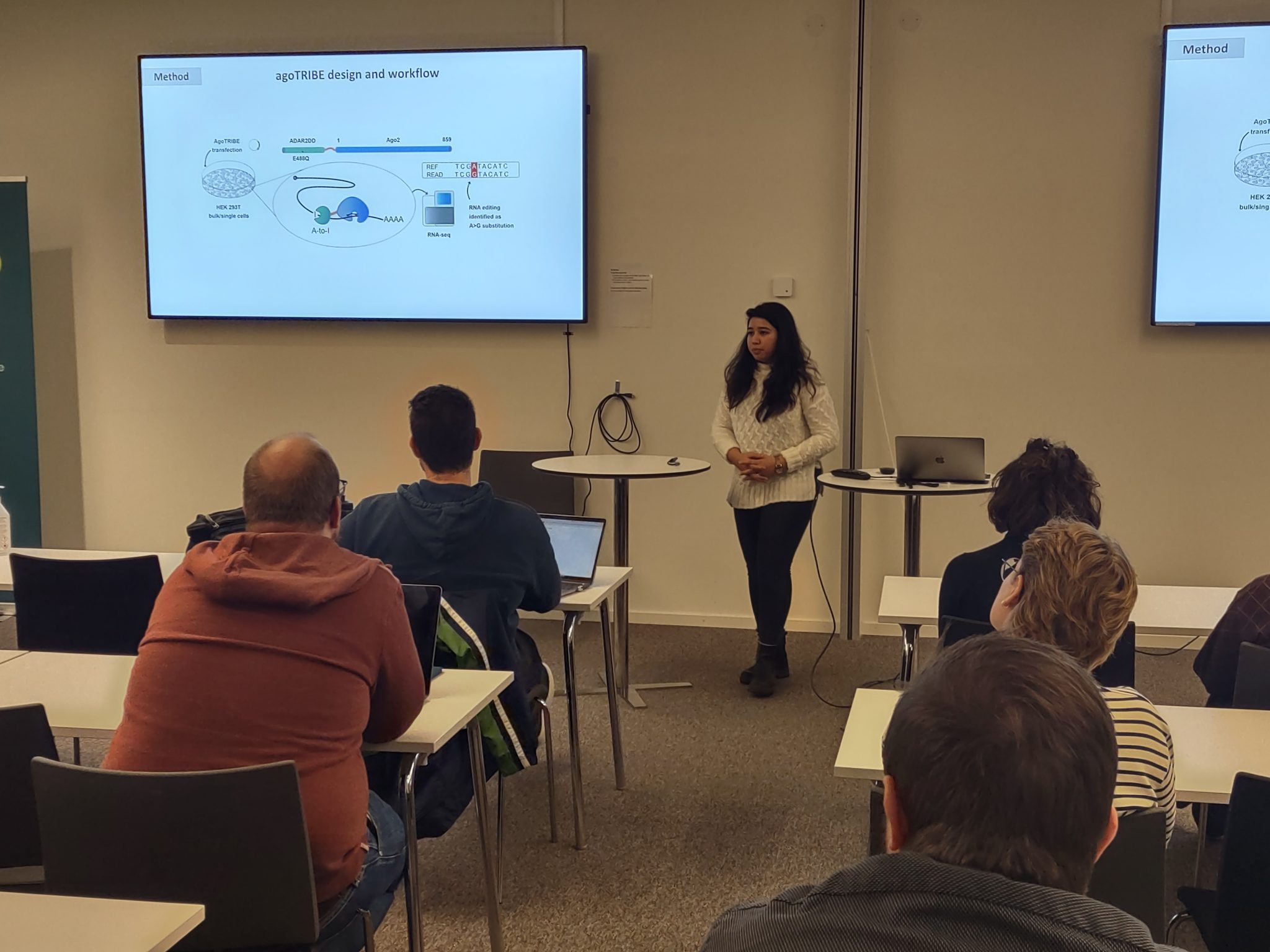SciLifeLab Uppsala PhD&Postdoc seminar series
January 18 @ 11:00 – 11:50 CET
Welcome to the SciLifeLab Uppsala PhD&Postdoc seminar series!
For this occasion the speakers will be:
1. Inês Neves, Phd student at the Neuro-Oncology group (Lene Uhrbom’s lab), Dept. of Immunology, Genetics and Pathology
Title:
Stages and transitions of glioblastoma development from a defined glial cell of origin.
Summary:
Tumor cells displaying OPC identity are common in pediatric brain tumors such as medulloblastoma and malignant glioma. In pediatric malignant glioma it is in fact the most frequent cell state found but the significance of this is not known. We have recently shown that neonatal OPCs can serve as cell of origin for experimental malignant glioma and that these tumors were relevant representatives of pediatric high-grade glioma. The purpose of this project is to investigate the role of OPC identity and how it is connected with OPC origin in pediatric malignant glioma with the goal to understand the processes driving tumor malignancy and uncover tumor cell-specific targetable mechanisms.
2. Viktor Ek, PhD student at Mikael Sellin’s group, Dept. of Medical Biochemistry and Microbiology (IMBIM)
Title:
Bacterium-bacterium heterogeneity.
Summary:
Bacteria come in all shapes and sizes. Their morphology is no accident, and often visually similar bacteria have similar lifestyles. Salmonella are gut bacteria that cause severe health problems throughout developing countries. The species Salmonella Typhimurium (S.Tm) are rod-shaped, single-cell pathogens that swim around using appendages known as flagella. They use this ability to spread out locally and search for fitting sites for infection, but turn off such virulence machinery to save energy during e.g. replication. In this seminar, we will discuss our study of a previously overlooked phenotype of S.Tm that we call “doublets”, a mid-division and simultaneously swimming category. Intriguingly, this transient phenotype is highly capable of infecting cells. Doublets also swim straighter than the other bacteria, likely because of their size, increasing the overall search area for fitting invasion sites for the community. Such divergence contributes to an advantageous diversification of the S.Tm population – and serves as a healthy reminder of individual-to-individual differences in general populations.
Please join us using this Zoom link: https://uu-se.zoom.us/j/62510720849


